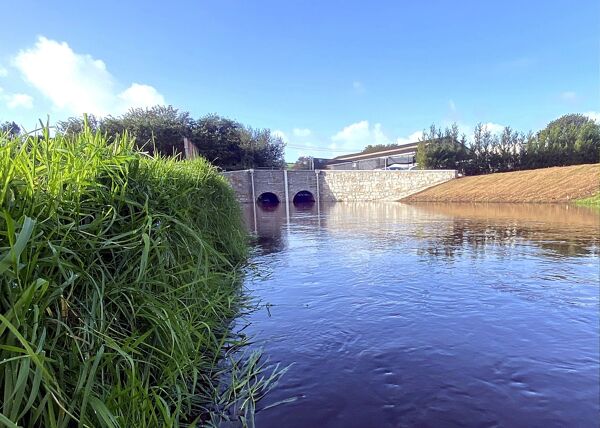
By Simon Fullalove
NEC contracts have been used to deliver an innovative ‘sandscaping’ scheme to provide sustainable coastal protection to one of Britain’s biggest complexes of natural gas terminals. A total of 1.8 million m 3 of dredged sand was used to repair the storm-damaged coastline in front of the Bacton gas terminals site in Norfolk, which imports 30% of the UK’s gas.
In 2013, a 2 m storm surge eroded 10 m of cliff in front of the complex of terminals to leave it less than 15 m from the sea. Various ‘hard’ options were explored by terminal operators Shell UK Ltd and Perenco UK Ltd − including gabions, revetments, groynes and rock armour − to provide the required protection against a 1-in-10,000 year storm. However, all would have increased erosion of adjacent beaches at Bacton and Walcott.
After extensive digital modelling, a 5.7 km long Dutch-inspired sandscaping scheme was developed by the terminal operators and North Norfolk District Council, the first of its kind in the UK. It involved placing 1 million m 3 of dredged sand up to 7 m deep in front of the gas terminals and a further 0.8 million m 3 alongside the villages of Bacton and Walcott. The pioneering work was carried out between February and September 2019 by Team Van Oord under a £20 million NEC3 Engineering and Construction Contract (ECC) Option C (target contract with activity schedule).
The first phase involved replacing three existing sea outfalls from the gas terminals with a new 500 mm diameter combined sea outfall extending a further 150 m offshore. A trailing suction hopper dredger then started delivering an average of 50,000 m 3 of sand a day from near Great Yarmouth and pumping it ashore via a 1 km long floating pipeline. A fleet of satellite-positioned earthmoving plant formed the new 250 m wide beach at up to 240 linear m a day.
Scheme designer Royal HaskoningDHV was engaged as NEC project manager under an NEC3 Professional Services Contract option A (priced contract with activity schedule). The firm also provided design support during the works under an NEC3 PSC option E (time-based contract). The project was successfully completed on schedule and under budget in September 2019. It won the Climate Resilience Project of the Year in the 2020 British Construction Industry Awards.
Delivering Objectives
The Council’s coastal manager Rob Goodliffe says, ‘After considering a range of procurement options, the project team decided the Environment Agency’s NEC-based water and environment management framework was the best way to achieve our objectives of building a 6 km long sand dune in just 7 months.’
Running from 2013 to 2019, the WEM framework specified the use of NEC3 ECC Option A, C or E. ‘For this project we adopted an ECC Option C target contract to allow for sharing of risks and benefits between the client and the contractor. It also provided us with sufficient flexibility to cope with the challenges of a fast-paced dredging contract with an inherent degree of cost uncertainty.’
Goodliffe says the use of the NEC on the high value but short-duration contract allowed for rapid and effective management of change. ‘In line with the ECC clause 10.1 obligation to work in a “spirit of mutual trust and co-operation”, there was close cooperation between the project manager, the client and the contractor throughout the contract and a high level of trust was established. This ensured that any changes were agreed quickly so as to limit delays on site.’
He says that full and open discussions were had between the parties before project manager instructions were issued. ‘This ensured that the high-level consequences of each change to all parties were understood at the earliest opportunity. Overall NEC promoted strong collaborative behaviours, provided a clear allocation of risk and ensured a proactive approach to programme management. The contracts were clear and concise, and were well understood by all parties.’
Goodliffe says the net result was that the complex, multi-client scheme was completed on time and under budget. ‘The cost saving enabled us to enhance the scheme with additional sand and, in spite of weather delays, we were able to open all the new beaches to the public in time for the August bank holiday weekend. We now have a natural, sustainable coastal protection scheme which will require minimal intervention over the next 15−20 years.’
Benefits of Using NEC
- NEC enabled delivery of a unique solution to fulfil a complex, multi-client brief to protect critical infrastructure and communities in a sustainable way.
- ECC Option C clearly shared risks and benefits between the client and contractor, and provided flexibility to cope with the challenges of a fast-paced dredging contract with a degree of cost uncertainty.
- NEC obligation to work in a ‘spirit of mutual trust and co-operation’ ensured that changes were agreed quickly to limit delays on site, enabling the scheme to be delivered on time and under budget.



